Unique Logistics Solutions to Complex Container Drayage Issues
Today, more than 80% of global shipping involves containers. They're packed with everything from personal storage items in dry containers to heavy machinery on flat rack containers. For business owners shipping products, getting a container from point A to point B requires precise planning and high-level tracking. But that's easier said than done when global supply chains become over-congested, leading to loading time issues and delays.
That's bad news for business owners who are already under a massive amount of stress. The truth is that container storage delays can cripple a business, but there's a viable solution: drayage brokers in Austin, TX like RelyEx. Drayage companies provide unique solutions to minimize demurrage and help ensure the successful delivery of your freight.
With more than 30 combined years of experience and a solutions-oriented team, RelyEx has quickly become the first choice for streamlined, efficient drayage services. To understand the true value of RelyEx's offerings in the global logistics industry, it helps to understand first what drayage is and why it's used.
What is Drayage and Why Is It Important?
If you're a seasoned business owner who uses port drayage to transport your products, you know exactly how important the service can be. But if you were to poll a group of random people, you may get five different definitions of the term "drayage." That begs the question, how is one of the most crucial steps in the supply chain and most vital components of global trade such a confusing concept? When you break it down, it's not too difficult to grasp.
Drayage, by definition, means the transportation of freight from an ocean port to another destination. Today, drayage is also used to describe the process of transporting products and goods over short distances or over "the first mile."
While drayage often means short-distance movements during the supply chain process, it's primarily used in the container shipping space. Drayage loads usually have arrival and departure points in the same city and don't include long-haul, national transportation.
Let us know how we can help.
drayage broker Services
Service Areas
Because a drayage load can mean a few different things, confusion among carriers is common. Many carriers link drayage with going into a port, but that isn't always true. While all drayage loads typically originate from a port of entry, there are often several legs of a drayage journey before a container turns up at its final stop. Legs of a drayage load may include:
Why Are Drayage Companies in Austin, TX So Important?
You may be thinking, what's so important about drayage? It's such a small step in the container storage transport process. In reality, it's an integral piece needed in the logistics industry and a crucial part of U.S. supply chain management.
To truly understand the importance of drayage, let's use flowers as an example. Most cut flower shipments enter the market from areas in South America until they end up at Dutch auction houses. Once there, wholesalers purchase flowers in bulk and send those products to retail outlets worldwide. Because flowers are perishable, they typically need to be refrigerated and are often shipped in reefer containers. These refrigerated vessels must maintain a certain temp to prevent loss.
Drayage companies like RelyEx allow flower shippers to send their products from Argentinian ports to airports in the Netherlands with peace of mind because their products are protected. The only way to accomplish this feat is with the help of swift, meticulous port drayage services. Drayage companies allow flower shippers to send their products from Argentinian ports to airports in the Netherlands with peace of mind, because their products are protected. The only way to accomplish this feat is with the help of swift, meticulous port drayage services.
If port drayage is compromised, it can cause delays and even fines. You know the packages you get delivered to your front door from apps like Amazon? Without drayage and drayage brokers, one or two-day shipping times wouldn't even be possible.
As a multi-billion-dollar industry in the U.S. alone, it seems like drayage shipping issues shouldn't exist. But the fact is inefficiencies and congestion are still major problems at ports. Whether it's a lack of carriers, absent chassis, or overburdened terminals, delays lead to missed deadlines, lost revenue, and worse.
But anytime challenges exist, so too do innovative solutions.
QUOTE REQUEST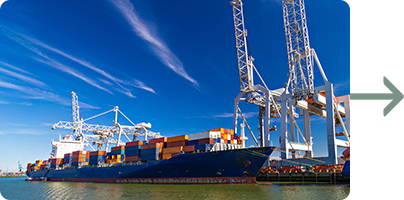
Port
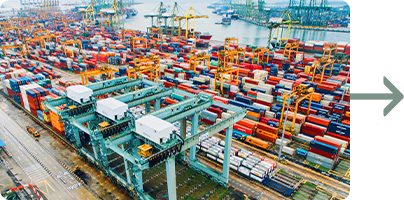
Yard
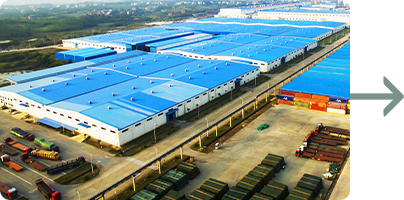
Warehouse
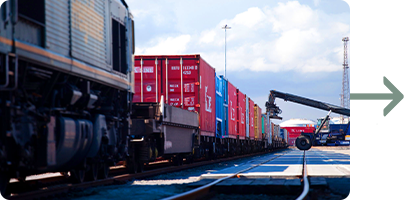
Rail

The RelyEx Difference
RelyEx was created because our founders saw a need in the logistics space for more reliability and efficiency. The reality of the shipping and logistics industry is that it has become very transactional. It's an odd evolution, because most businesses seek a third-party logistics partner that is accessible, transparent, and committed to providing solutions.
As the logistics space continues to grow, it creates newfound expenses and complexities. Clients like ours know that and need a supply chain partner who is genuinely interested in their business. By understanding the needs of our customers and carriers, we can provide the most reliable, effective drayage services possible.
Unlike some drayage companies in Austin, TX, we begin managing your containers before they ever hit the ports by mapping out the most efficient pathways of delivery. That way, our team can discover the best drayage pathways to expedite delivery time and reduce fees that cut into profits.
Our valued drayage customers choose RelyEx because:

RelyEx Solves Problems
At RelyEx, we like to consider ourselves problem solvers. The nature of the container drayage industry presents new challenges every day, but we're firm believers that there's a solution to every hurdle we encounter. And while some drayage businesses implement a reactive approach, RelyEx customers choose us for our proactive mindset. We take pride in solving your company's drayage challenges to help you avoid frustrating fees, missed expectations, and delayed shipments. We strive to make every transaction successful and streamlined by partnering with shippers who prioritize transparent, prompt, and accurate communication.

RelyEx Has a Unique Vantage Point
RelyEx approaches your business from the customer's perspective - a unique approach that helps us provide high-quality, effective drayage services. We've been in the customers' shoes, know their pain points, and because of that, provide first-hand solutions to stressful supply chain issues. With over 30 years of collective knowledge, our team excels in:
- Inventory Management
- Logistics
- Purchasing
- Finance
Our varied, high-level drayage shipping experience helps us achieve our overarching goal: expertly managing your freight movement needs. That way, you can direct your time and focus on growing the core aspects of your business while we handle the heavy lifting. Throw in proactive planning to avoid bottleneck situations and strong communication for transparent customer relations, and you can see why so many companies trust RelyEx.

RelyEx Nurtures Strong Carrier Relationships
When it comes to shipping logistics, it only takes one mistake by a mediocre worker to disrupt your business. That's why, at RelyEx, we pride ourselves on forming and nurturing relationships with carriers who match our standards of care. Our founding partner started his career transporting freight for companies as an on-demand carrier. He uses that knowledge to maximize the resources of our carriers so that our customer's expectations aren't just met - they're exceeded.
Why Choose RelyEx as Your
Drayage Company in Austin, TX?
Based in the port city of Austin, RelyEx has a keen understanding of the challenges of managing the inbound and outbound flow of containers. Our team of container drayage experts provides your business with unique solutions to nuanced shipping problems, minimizing demurrage and ensuring the successful delivery of your freight.

Customers choose RelyEx because:
- We are a reliable drayage logistics partner that manages your freight from beginning to end
- We have a rare industry vantage point with 30+ years of client-side experience
- We foster and fortify the strongest vendor relations
- We take a proactive approach to problem-solving, not a reactive approach
Let us know how we can help.
 843-885-3082
843-885-3082

Your Drayage Shipments Managed from Start to Finish
Some drayage brokers don't care how customers feel about their service as long as they sign a contract and get paid. As a solutions-oriented team, RelyEx takes the opposite approach. We're motivated by the opportunity to overachieve for our customers and to provide them with the best logistics experience possible. With professional experience as carriers and shippers ourselves, we know the roadblocks and challenges you're facing. We excel at mapping out the best plans of action to solve those problems. But that's just the start.
Our tracking experts monitor and manage every aspect of your drayage shipment from booking to delivery, 24/7. Once booked, we look for the availability of your containers hourly once they're at port. When they arrive, our team acts quickly to access your storage containers when they're available.
Plus, RelyEx ensures your company's requirements are met by the carrier during loading and delivery and provide necessary documentation as fast as possible. With real-time tracking updates and access to our customer service professionals, your team has complete visibility throughout the shipping process.
We Source Top-Notch Operators at the Best Prices
Over the years, RelyEx has built a strong network of drayage carriers, transloading locations, and container storage spaces to provide you with the best possible options to match your drayage service needs. We know that searching for quality service presents an added layer of complexity and stress to our customers. That's why we work hard to take that off your plate by connecting you with our reliable shipping partners.
With a background moving freight as an on-demand carrier, our founding partner understands how to maximize the resources and equipment of our carriers to match your needs.
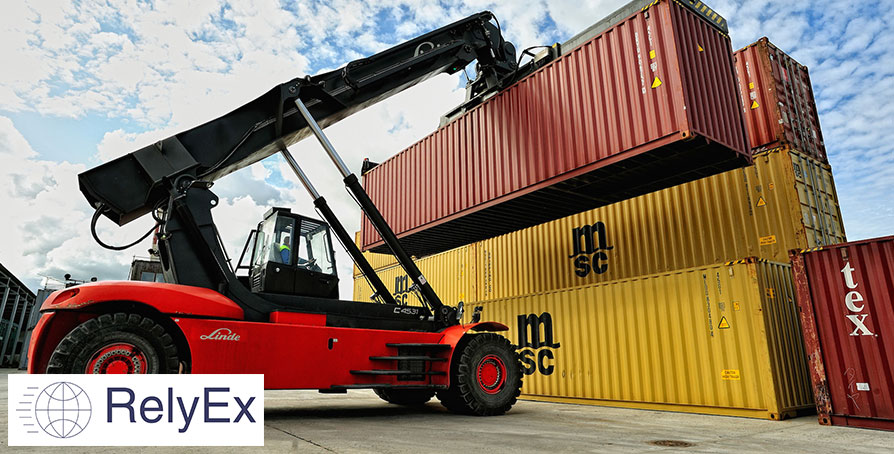

We Make Transparent, Timely Communication a Priority
Like other industries, the global logistics space is complex. Mistakes will be made, and problems will happen. With those truths in mind, RelyEx has built its reputation as problem solvers. Unlike other drayage companies, we don't shy away from this industry's complexities because we take pride in solving problems. Even better, we aim to do what's needed to avoid those problems altogether.
As your logistics partner, we will provide your company with accurate, transparent, and prompt communication. If there are unexpected issues, we'll notify you immediately and will provide several options to remedy the problem. We even offer custom reporting for large clients who need at-the-moment updates and quick access to shipment documentation.
We Have Robust Project Management Experience
Why let the unpredictability of your industry dictate your success? With a background working in manufacturing, our founders are familiar with the demands of managing production schedules and sales orders. That experience makes it abundantly clear to us that every business and industry is different. If you struggle with seasonal surges or other factors, our team supports your business with a mapped-out plan and schedule, so you stay ahead of the game.
QUOTE REQUEST
How to Avoid
Demurrage Fees for Your Business
Based in the port city of Austin, RelyEx has a keen understanding of the challenges of managing the inbound and outbound flow of containers. Our team of container drayage experts provides your business with unique solutions to nuanced shipping problems, minimizing demurrage and ensuring the successful delivery of your freight.
What is shipping demurrage?
Demurrage is a charge issued by a port, carrier, or railroad company for storing containers that do not load and unload their cargo promptly. Once the daily limit of free time is exceeded, shippers are charged daily demurrage fees until their cargo is shipped. Though different ports have different policies, charges can range from $75 to $150 per container, per day, for a set number of days. Additional demurrage fees are incurred if a shipper exceeds the port's parameters.

What causes demurrage charges?
Even when shippers maintain a tight schedule for unloading freight, external factors can play an uncontrollable part. Typically, shipping mistakes caused by human error trigger the most demurrage charges. Some of the most common causes of demurrage include:
- Paperwork Errors
- Payment Delays
- Documents Received Too Late

Paperwork Errors
Typically, shippers need four specific documents to clear shipments through customs: A Bill of Lading (or BOL), a commercial invoice, a packing list, and an arrival notice. Seasoned drayage brokers like RelyEx are used to preparing these documents, but new shippers tend to miss this step due to inexperience.
Payment Delays
If a shipper only pays for part of their shipment, a vessel operator may refuse to release their freight until their bill is fully paid. Payment delays lead to cargo detention at the port of entry, which triggers demurrage charges.
QUOTE REQUESTDocuments Received Too Late
Paperwork is needed when you're shipping goods with a drayage company. When documents like the Certificate of Origin or Bill of Lading arrive at their destination late, you can expect demurrage fees. RelyEx avoids this situation entirely by being proactive when submitting paperwork.
Additional causes for demurrage fees can include:
- Damaged Container Storage
- Custom Released Containers
- Storage Containers Are Too Heavy
Free Consultation
RelyEx:
The Supply Chain Partner You Can Count On
At RelyEx, we know first-hand how stressful supply chain problems can be for business owners. Though drayage shipping might seem minor on the surface, it affects every stage of your shipping process. And when inevitable hurdles manifest, RelyEx propels you over the proverbial roadblocks with a proactive mindset and a passion for challenging projects. We believe that all problems have a solution, and our unique vantage point allows us to provide first-hand solutions to customers in a wide array of industries.
When it comes to your business, don't settle for anything less than RelyEx. Contact our office today to learn more about how we make your shipping experience streamlined and stress-free.
 843-885-3082
843-885-3082
Latest News in Austin, TX
Total Eclipse of the Central Texas Heart
austintexas.govhttps://www.austintexas.gov/news/total-eclipse-central-texas-heart
On Monday, April 8, a total solar eclipse will take place, and the path of totality will travel directly over Central Texas. Skies will darken completely in the middle of the day within the path of totality when the sun is blocked by the moon.The City anticipates increased visitation to Central Texas by people seeking to experience this astronomical rarity. The City of Austin’s Office of Homeland Security and Emergency Management (Austin HSEM) and its partners in public safety are prepared for the event and ready assist other ju...
On Monday, April 8, a total solar eclipse will take place, and the path of totality will travel directly over Central Texas. Skies will darken completely in the middle of the day within the path of totality when the sun is blocked by the moon.
The City anticipates increased visitation to Central Texas by people seeking to experience this astronomical rarity. The City of Austin’s Office of Homeland Security and Emergency Management (Austin HSEM) and its partners in public safety are prepared for the event and ready assist other jurisdictions if needed. The Austin and Travis County Emergency Operation Center will be activated on Sunday and Monday.
“Being in the path of totality for the solar eclipse is a special and once-in-a-lifetime event,” said Ken Snipes, Director of Austin HSEM. “Because the chance to see a total eclipse is so rare, we anticipate thousands of visitors to our area for this event. We encourage Central Texans to plan accordingly and to safely watch the event.”
What Happens During a Total Solar Eclipse
During a total solar eclipse, the moon travels between Earth and the sun at a point of its orbit in which it is close enough to Earth to completely block the sun. The path of totality will travel northeast across North America with the first location experiencing totality along Mexico’s Pacific Coast. The path will then cross the U.S. passing through Texas, Oklahoma, Arkansas, Missouri, Illinois, Kentucky, Indiana, Ohio, Pennsylvania, New York, Vermont, New Hampshire, and Maine.
Prior to experiencing totality, the moon will begin to cover the sun as it moves across the sky, resulting in partial coverage. Locations outside the path of totality will not experience complete darkness because the moon will not completely cover the sun, but they will experience a partial eclipse. For more information on how eclipses work visit science.nasa.gov/eclipses.
The length of time a location will experience total darkness depends on how close one is to the center of the path of totality. For example, Downtown Austin is anticipated to receive approximately 2 minutes of darkness beginning at 1:36 p.m. Cities further west near the center of the path like Johnson City (4 minutes, 1 second), Fredericksburg (4 minutes, 23 seconds), and Kerrville (4 minutes, 24 seconds) will experience more time of totality. These areas are expected to have a large number of travelers, and traffic will be much greater than usual the day of the eclipse in these locations.
This is the first time a total solar eclipse will be viewable in the contiguous United States since 2017, and the first path of totality in Texas since 1900. The next total solar eclipse will be viewable in the lower 48 states in 2044, but the next total solar eclipse with totality over Central Texas will not occur until 2343.
Where to Watch
Austin HSEM has created a website that compiles information from around the region on safety, viewing tips, events, and more.
Austin Public Library and Austin Parks and Recreation Department facilities are hosting educational programming for all ages about the eclipse. Some locations will also have eclipse glasses available.
For a full list of place to watch the eclipse in Austin and around the region go to ReadyCentralTexas.org/eclipse.
Cell Service, Travel and Road Safety
With so many visitors expected in Central Texas, cell towers could be overwhelmed. The City encourages everyone to have a plan in place to communicate with family and friends if cell phone service is impacted.
The City encourages community members to plan travel ahead of time, to work from home if possible and refuel your vehicle prior to the weekend to avoid congestion at gas stations. If you are driving during the eclipse focus on the road, turn on your lights and never wear eclipse glasses driving behind the wheel.
If you stop to watch, be mindful of where you pull over or park. Do not park on shoulders, medians, tall grass, or in the middle of the road. Park your vehicle in safe and designated areas.
Airport travelers should contact their respective airlines directly for any flight questions or concerns. Austin-Bergstrom International Airport expects long lines at rental car return and pick-up locations so please arrive early if you are traveling.
Stay informed about traffic patterns and road closures through local news sources.
Protect Your Eyes and Watch Safely
Eclipse glasses are widely available at retailers in the area and online. Get eye protection as soon as you can. As the eclipse date gets closer, it may be harder to find the eye protection you will need for safe viewing. A list of city parks and libraries distributing glasses and hosting watch party events can be found at ReadyCentralTexas.org/eclipse.
-- 30 --
10 Fantastic Thai Restaurants in Austin
Erin Russellhttps://austin.eater.com/maps/best-thai-restaurants-austin
Thai cuisine hits all the right notes: rich, spicy, sweet, and deeply flavorful. The Southeast Asian country offers up coconut-laced curries, spicy seared meats and vegetables, satisfying noodles, plus those good ol’ pad Thai dishes, if that’s what you’re into. Top it off with sticky rice desserts and Thai iced tea, and you’re set.Here is Eater’s guide to Austin’s top Thai restaurant destinations. There are household staples like Titaya’s Thai Cuisine and Thai Fresh to casual spots like Madam ...
Thai cuisine hits all the right notes: rich, spicy, sweet, and deeply flavorful. The Southeast Asian country offers up coconut-laced curries, spicy seared meats and vegetables, satisfying noodles, plus those good ol’ pad Thai dishes, if that’s what you’re into. Top it off with sticky rice desserts and Thai iced tea, and you’re set.
Here is Eater’s guide to Austin’s top Thai restaurant destinations. There are household staples like Titaya’s Thai Cuisine and Thai Fresh to casual spots like Madam Mam’s and Sap’s, and food trucks like Dee and Kiin Di.
For more Asian fare, check out Eater’s map of the best restaurants for Southeast Asian, South Asian, and Chinese cuisines, as well as the city’s spiciest dishes.
This map was originally written by Sommer Brugal.
Eater maps are curated by editors and aim to reflect a diversity of neighborhoods, cuisines, and prices. Learn more about our editorial process.
This North Lamar favorite serves traditional Thai dishes along with Asian fusion options. The classic favorites are front and center with options like the Ta-Lay Dancing, a spicy combination of stir-fried shrimp, squid, green mussels, and vegetables. Takeout orders can be placed online; there are indoor dine-in services.
The Thai mini-chain is a favorite amongst Austinites for its super-spicy fare. The menu, created by owner Chatfuang Mam, is a reflection of her food education, culinary knowledge, and generational methods. She was once married to Sap Apisaksari, but after the divorce, she kept the restaurant, and he opened Sap’s (see below). There are several locations throughout the greater Austin area: this one in West Campus and others in North Shoal Creek, Bee Cave, and Cherry Creek in South Austin. Takeout orders can be placed online; there are indoor dine-in services.
This Cherrywood spot is another very solid food truck option, serving up curries, stir-fries, noodles, and chicken wings that are also halal. Takeout orders can be placed in person; there are outdoor dine-in areas.
The sole remaining location of Austin’s upscale restaurant serving Thai with Australian takes is found in Westlake. The chic decor sets the right ambiance for a special occasion or night out, and the modern food is fun. There’s also a great patio with views of downtown Austin. Takeout orders can be placed online or over the phone; there are indoor and outdoor dine-in services.
Through their Zilker truck, co-owners and chefs Panyada Chaikantha, Bee TP and Chris Matthana hone in on really well-made flavorful Thai dishes, from the creamy soft-shell crab curry, Thai-style fried chicken and pad thai. Takeout orders can be placed online or in person; there are indoor and outdoor dine-in areas courtesy of host site Corner Bar.
The Bouldin Creek spot from chef and owner Jam Sanitchat is a restaurant-slash-cafe-slash-bakery that focuses on Texas-sourced sustainable ingredients. The cozy South Austin spot offers traditional dishes like papaya salad and green curry fried rice. The small market also sells Thai ingredients like herbs, lemongrass, chilies, curry pastes, and much more. Takeout orders can be placed online or in person; there are indoor and outdoor dine-in services.
The South Lamar food truck’s name is Thai for “good, good,” and that is exactly, under the helm of Lakana Trubiana. The short but strong menu includes moo ping, soothing om gai (brothy chicken with sticky rice), and seasonal mango sticky rice. Takeout orders can be placed online; there are indoor and outdoor dine-in areas courtesy of host site Radio Coffee.
The Westgate Thai restaurant from Sap Apisaksari is a result of his divorce from Chatfuang Mam (who kept their original restaurant Madame Mam’s, see above). The very extensive menu offers loads of curries, noodles, soups, and very spicy green beans. Takeout and delivery orders can be placed online; there are indoor dine-in services.
The South Manchaca neighborhood Thai restaurant is another Austin classic. The family-run spot offers exemplar dishes ranging from soups to stir-fries to curries. The house specials in particular are great, such as the hor mok, a steamed fish dish with red curry. Takeout orders can be placed online; there are indoor and outdoor dine-in services.
Okay, yes, this Thai restaurant is way out west in technically Garfield, Texas, but the trek is well worth it for some of the greater Austin area’s absolute best Thai food. Don’t miss the red curry with succulent roast duck and the bright pad gra prow (a meat and vegetable stir-fry). Takeout orders can be placed online; there are indoor dine-in services.
This North Lamar favorite serves traditional Thai dishes along with Asian fusion options. The classic favorites are front and center with options like the Ta-Lay Dancing, a spicy combination of stir-fried shrimp, squid, green mussels, and vegetables. Takeout orders can be placed online; there are indoor dine-in services.
The Thai mini-chain is a favorite amongst Austinites for its super-spicy fare. The menu, created by owner Chatfuang Mam, is a reflection of her food education, culinary knowledge, and generational methods. She was once married to Sap Apisaksari, but after the divorce, she kept the restaurant, and he opened Sap’s (see below). There are several locations throughout the greater Austin area: this one in West Campus and others in North Shoal Creek, Bee Cave, and Cherry Creek in South Austin. Takeout orders can be placed online; there are indoor dine-in services.
This Cherrywood spot is another very solid food truck option, serving up curries, stir-fries, noodles, and chicken wings that are also halal. Takeout orders can be placed in person; there are outdoor dine-in areas.
The sole remaining location of Austin’s upscale restaurant serving Thai with Australian takes is found in Westlake. The chic decor sets the right ambiance for a special occasion or night out, and the modern food is fun. There’s also a great patio with views of downtown Austin. Takeout orders can be placed online or over the phone; there are indoor and outdoor dine-in services.
Through their Zilker truck, co-owners and chefs Panyada Chaikantha, Bee TP and Chris Matthana hone in on really well-made flavorful Thai dishes, from the creamy soft-shell crab curry, Thai-style fried chicken and pad thai. Takeout orders can be placed online or in person; there are indoor and outdoor dine-in areas courtesy of host site Corner Bar.
The Bouldin Creek spot from chef and owner Jam Sanitchat is a restaurant-slash-cafe-slash-bakery that focuses on Texas-sourced sustainable ingredients. The cozy South Austin spot offers traditional dishes like papaya salad and green curry fried rice. The small market also sells Thai ingredients like herbs, lemongrass, chilies, curry pastes, and much more. Takeout orders can be placed online or in person; there are indoor and outdoor dine-in services.
The South Lamar food truck’s name is Thai for “good, good,” and that is exactly, under the helm of Lakana Trubiana. The short but strong menu includes moo ping, soothing om gai (brothy chicken with sticky rice), and seasonal mango sticky rice. Takeout orders can be placed online; there are indoor and outdoor dine-in areas courtesy of host site Radio Coffee.
The Westgate Thai restaurant from Sap Apisaksari is a result of his divorce from Chatfuang Mam (who kept their original restaurant Madame Mam’s, see above). The very extensive menu offers loads of curries, noodles, soups, and very spicy green beans. Takeout and delivery orders can be placed online; there are indoor dine-in services.
The South Manchaca neighborhood Thai restaurant is another Austin classic. The family-run spot offers exemplar dishes ranging from soups to stir-fries to curries. The house specials in particular are great, such as the hor mok, a steamed fish dish with red curry. Takeout orders can be placed online; there are indoor and outdoor dine-in services.
Okay, yes, this Thai restaurant is way out west in technically Garfield, Texas, but the trek is well worth it for some of the greater Austin area’s absolute best Thai food. Don’t miss the red curry with succulent roast duck and the bright pad gra prow (a meat and vegetable stir-fry). Takeout orders can be placed online; there are indoor dine-in services.
Solar eclipse traffic: What to expect in Austin, Central Texas
Erica Brenneshttps://www.kxan.com/weather/eclipse/solar-eclipse-traffic-what-to-expect-in-the-austin-area/
AUSTIN (KXAN) — One of the most common questions about the total solar eclipse is about traffic expectations. KXAN Traffic Anchor Erica Brennes has details on where you can expect solar eclipse traffic to be heaviest on April 8.Let’s start in Austin where you’ll have lots of people staying put to view the eclipse, but you’ll also have folks coming through Austin from the east, headed west. You can expect people driving in from c...
AUSTIN (KXAN) — One of the most common questions about the total solar eclipse is about traffic expectations. KXAN Traffic Anchor Erica Brennes has details on where you can expect solar eclipse traffic to be heaviest on April 8.
Let’s start in Austin where you’ll have lots of people staying put to view the eclipse, but you’ll also have folks coming through Austin from the east, headed west. You can expect people driving in from cities east of Austin, like Bastrop, Manor, La Grange, and Houston.
Many will pass right through Austin and continue heading west to cities like Fredericksburg or Marble Falls.
For comparison, the City of Austin is expected to get roughly one minute and 37 seconds of totality, meaning the sun will be completely covered by the earth’s shadow.
But if you head southwest from Austin on U.S. Highway 290, you get more time in the path of totality. For instance, Dripping Springs is expected to get 2 minutes and 58 seconds. Johnson City should see 3 minutes and 58 seconds. Fredericksburg gets 4 minutes, 23 seconds.
All of those cities are located along U.S. Highway 290, so you can expect heavy traffic along that highway throughout the solar eclipse.
U.S. Highway 281 is also expected to have heavier traffic for the solar eclipse. The road runs through cities like Marble Falls, with 4 minutes and 13 seconds of totality, and Burnet, with 4 minutes and 20 seconds of solar eclipse totality expected.
Even Liberty Hill is slated to get 3 minutes and 51 seconds of totality. This means U.S. Highway 183 headed to Liberty Hill and Highway 29 between Liberty Hill and Burnet will be crowded.
One big thing to remember — you should not stop in the middle of the highway to catch a view of the eclipse.
“Our job is to keep the roadways open before, during and after the eclipse. Open, however, does not always mean flowing,” Bradley Wheelis, a spokesperson with the Texas Department of Transportation, said.
TxDOT has switched their highway signs to remind drivers about the solar eclipse on April 8 and to plan ahead, by knowing your viewing location in advance so you’re not tempted to park illegally to watch.
“Be prepared to spend some time in traffic because you will not stop on the roadway to view the eclipse. Do not park on the shoulder and stay off the right of way to avoid damaging our beautiful wildflowers or sparking a wildfire,” Wheelis said.
Drivers should be mindful of the extra people out and about looking up at the sky, possibly not paying attention to the vehicle traffic around them.
If you want to leave the driving to someone else, CapMetro is offering riders a way to enjoy the eclipse in Leander using the MetroRail.
The first departure from downtown to Leander is at 6:55 a.m. Monday. It takes a little over an hour to get to Leander from downtown on the Red Line.
Once there, CapMetro is hosting an “Eclipse-nic” from 11:30 a.m. to 2 p.m.
They’ll have complimentary eclipse glasses and the first 250 guests will get lunch and picnic blankets.
They’ll also have port-a-potties set up for the event. Leander is in the path of totality for three minutes and 32 seconds.
Austin’s housing market, once among the hottest in the US, is cooling
Kristen Cabrerahttps://www.texasstandard.org/stories/austin-tx-real-estate-market-decreasing/
During the pandemic, as housing prices reached record levels, Austin was ground zero. But now – despite recent dueling headlines – KUT’s ...
During the pandemic, as housing prices reached record levels, Austin was ground zero. But now – despite recent dueling headlines – KUT’s Audrey McGlinchy says the facts make it clear that Austin’s housing market is decreasing.
The housing reporter spoke with Texas Standard about why it’s currently tricky to both buy and sell a house in the Texas capital city.
This transcript has been edited lightly for clarity:
Texas Standard: You know, I was just reading a couple of days ago, Business Insider was reporting that Austin’s real estate market is getting hotter. And then this Wall Street Journal story from just a day ago is saying what was once America’s hottest housing market is running in reverse. What do you see?
Audrey McGlinchy: All the data that I’m looking at shows that for the past year, the housing market – and by that I mean for-sale housing, housing to own – those prices have been coming down here in Austin.
So, is this a matter of what goes up must come down, or is there more to it?
In part, obviously, there’s things that make those prices come down, right – it’s less natural than, “oh, this is just bound to come down.” And I mean, the big thing in Austin and across the country has been mortgage interest rates, right?
So since 2022, mortgage interest rates have climbed from historic lows. They were at about 2% to 3% for much of the pandemic, and they’ve risen to about 7% or 8%. Now we’re kind of in the 6% range. But what that means is that that makes buying a house much more expensive.
It makes people’s monthly mortgage payments go up. So fewer people can now qualify for mortgages and afford to buy homes. And with fewer people competing for homes, prices naturally just come down. So that’s what we’ve seen across the country and here in Austin.
A couple other things specific to Austin, which is that we’ve seen a slightly changing job market. As many people may have seen, there have been tech layoffs across the country, including companies that have offices here in Austin. So, you know, we’re seeing a slight dip in employment rates. But also just the fact that it’s just much more expensive to buy a house now.
» GET MORE NEWS FROM AROUND THE STATE: Sign up for Texas Standard’s weekly newsletters
Well, you know, once upon a time, in the not-too-distant past, Austin was being compared to cities like San Francisco and New York City when it came to prices. How’s Austin looking now?
Well, I want to point out that Austin was never as expensive as San Francisco and New York; that still remains true.
So right now I’m looking at some recent Zillow data I got: In San Francisco, the median home price is just over $1 million. Here in Austin, it’s closer to half a million or $500,000. New York, you know, you’re going to pay at least $600,000 for a condo there.
So yeah, things are definitely still cheaper here in Austin, as they have been.
Yeah, never quite reached those levels, but the fact that people were comparing Austin with those two cities, I think, raised a lot of eyebrows once upon a time.
But, if things are going in the other direction, what does that mean for folks who wanted to jump into the city’s housing market? Is now the time you hold on? What’s the feeling?
Well, so for a long time, Austin’s been called a seller’s market. And what that means is that it was always a good time to sell your house. You were likely always going to make money. You were likely always going to make a return on your investment, if you will.
Now it’s kind of no one’s market. And by that I mean it’s tricky both to buy and sell right now. Like I said earlier, it’s just much more expensive to buy right now. Your monthly mortgage payment is going to be much more than it would have been just two years ago if you had bought the house for that same price or even a little cheaper. And again, selling, you’re going to have to lower your price to sell, and some people just aren’t willing to do that.
So it’s kind of this impasse, if you will, that we’re at. And we’ve seen that change, though, over the past couple of months. I think people are getting used to these higher mortgage interest rates. They’re recognizing that this may be the new reality. And so, buyers are, you know, willing to kind of stomach that. And I think sellers are understanding that they’re going to have to drop their prices a bit.
You’ve been reporting that Travis County, according to latest census data, has witnessed a lot of folks leaving in recent months, moving elsewhere. Does this have an effect on – I presume it would – housing prices, or too soon to tell?
I mean, it certainly could, right? Fewer people moving to Travis County would mean less of a demand for housing, fewer people who need homes to live in.
But it also depends on who is moving here and who is leaving the city, right, and what kind of incomes those people earn. So, yeah, it certainly could have an impact. And I’ll be following that as we go on.
If you found the reporting above valuable, please consider making a donation to support it here. Your gift helps pay for everything you find on texasstandard.org and KUT.org. Thanks for donating today.
Austin will now allow more homes to be built on single-family lots
Joshua Fechterhttps://www.texastribune.org/2023/12/07/austin-zoning-single-family-housing-costs/
Sign up for The Brief, The Texas Tribune’s daily newsletter that keeps readers up to speed on the most essential Texas news.Amid a housing affordability crisis, the Austin City Council voted Thursday to allow the construction of more homes on single-family lots in a major bid to put more housing units on the market.The ...
Sign up for The Brief, The Texas Tribune’s daily newsletter that keeps readers up to speed on the most essential Texas news.
Amid a housing affordability crisis, the Austin City Council voted Thursday to allow the construction of more homes on single-family lots in a major bid to put more housing units on the market.
The change will allow homebuilders to put up to three housing units, such as duplexes and triplexes, on almost any lot in the city where single-family homes are currently allowed, a move aimed at juicing the city’s supply of homes affordable to middle-income households. Like most major U.S. cities, most of Austin’s residential land has long been zoned for only single-family homes.
That restriction — housing advocates, real estate experts and developerssay — has made it exceedingly difficult for the city to meet the rampant housing demand that has accompanied massive population growth. That lack in housing units has been a key factor in driving home prices and rents skyward.
“If you don't build more housing, then the price of existing housing is going to go up,” said Vicki Been, faculty director of New York University’s Furman Center for Real Estate and Urban Policy. “If you want to keep the housing affordable, or make it more affordable, you need additional supply.”
The Texas Tribune thanks its sponsors. Become one.
Critics of the new policy argue that denser housing will ruin the character of existing neighborhoods and displace low-income residents while doing little to provide affordable housing.
“I'm super disappointed to see this trickle-down policy proposed with no empirical evidence that it actually does anything for the middle class, let alone the lower class,” Carmen Llanes Pulido, executive director of Go Austin/Vamos Austin, a community health coalition, told the council Thursday.
After several hours of often passionate and heated public testimony from hundreds of speakers, council members approved the measure — part of a package of reforms known as the HOME initiative — by a 9-2 vote late Thursday evening.
“I think we can celebrate this moment and the achievement tonight as we create more housing opportunities across the city,” said Council Member Leslie Pool, the proposal’s author.
The two council members who voted against the measure — Alison Alter and Mackenzie Kelly — expressed doubts that allowing duplexes and triplexes in single-family neighborhoods would result in greater housing affordability.
“I believe that my colleagues and I agree on the goal working to create housing opportunities for those who the market often leaves behind: our public servants and service workers,” Council Member Alison Alter said. “The devil truly is in the details and we have not gotten the details right as proposed tonight.”
The decision to allow more homes on single-family lots is the latest in a broader push by Austin officials to relax city rules and spur more housing construction.
Last month, Austin became the largest city in the country to end requirements that new developments have a set amount of parking, often referred to as “parking minimums.” That measure is intended to allow more housing construction as well as fight climate change. The council is also weighing a proposal to reduce the amount of land the city requires to build single-family homes.
The Texas Tribune thanks its sponsors. Become one.
Like in many cities across Texas and the U.S., Austin’s dire shortage of housing worsened during the pandemic, resulting in even higher housing costs. The Austin region as a whole needed about 35,000 more homes than it had in 2021, according to a recent analysis by Up For Growth, a nonprofit that focuses on housing policy. Even as the region was among the busiest in the country for housing construction in recent years, building hasn’t kept up with population growth.
Cities like Portland have found some success in blunting the rise of housing costs by allowing more homes to be built on lots. The idea is to spread the cost of the land across multiple households, lowering the overall cost of individual homes. Cities that have eased their zoning restrictions have also kept rent in check, according to recent research.
In Austin, a group of homeowners has proven adept at killing city efforts to relax zoning restrictions, winning court battles in recent years to stop an overhaul of the city’s land development code — which hasn’t been substantially changed since the 1980s. Organizers with Community Not Commodity, a group that has vehemently opposed city zoning reforms, said Thursday morning it had delivered more than 10,000 petitions from residents protesting the changes.
Critics have blasted the proposed reforms as giveaways to developers. Skeptics doubt that allowing more homes to be built will ultimately reduce housing costs — and worry that doing so will accelerate gentrification and displacement in low-income communities.
The Texas Tribune thanks its sponsors. Become one.
More than 300 people signed up to speak against the proposal, criticizing the idea as a “land grab” and “plundering” and holding signs that read “PEOPLE OVER PROFIT” and “DON’T LET DEVELOPER$ ‘SCROOGE’ US OVER!”
Allowing more homes on single-family lots “means nothing but gentrification, more displacement, more desperation,” Fran Tatu, outreach director for Austin Mutual Aid, told the council Thursday.
Research shows that adding more supply lowers housing costs — and may actually protect low-income areas from gentrification and displacement. Austin officials plan to study whether the initiative contributes to displacement of communities of color among other potential consequences.
And a recent poll by the Pew Charitable Trusts shows large bipartisan majorities support policies aimed at encouraging more housing.
The Texas Tribune thanks its sponsors. Become one.
In Austin, proponents have also thrown their weight behind relaxing zoning rules as a key albeit partial step to solving the city’s housing woes. That broad coalition of supporters includes homebuilders, historic preservationists, labor unions, business groups and the Texas arm of the American Association of Retired Persons. Some 194 people signed up to speak in favor of the change Thursday.
“HOME will expand housing opportunities, particularly ownership opportunities for those who do not have access to such opportunities today,” Awais Azhar, a member of the advocacy group HousingWorks Austin, told the council.
Luke Metzger, executive director of Environment Texas, said denser housing stock is necessary to fight climate change. Research shows that households in denser neighborhoods emit fewer greenhouse gas emissions than those in lower-density areas, in part because they’re not commuting as much by car.
“The HOME initiative gives Austin a golden opportunity to reshape how we develop for coming generations, expanding the areas within Austin where compact and walkable neighborhoods can be built, will reduce the pressure for further sprawl, protect our environment and enhance our quality of life,” Metzger told the council Thursday.
The Texas Tribune thanks its sponsors. Become one.
Disclosure: HousingWorks Austin has been a financial supporter of The Texas Tribune, a nonprofit, nonpartisan news organization that is funded in part by donations from members, foundations and corporate sponsors. Financial supporters play no role in the Tribune's journalism. Find a complete list of them here.
Texans need truth. Help us report it.
Independent Texas reporting needs your support. The Texas Tribune delivers fact-based journalism for Texans, by Texans — and our community of members, the readers who donate, make our work possible. Help us bring you and millions of others in-depth news and information. Will you support our nonprofit newsroom with a donation of any amount?
Learn about The Texas Tribune’s policies, including our partnership with The Trust Project to increase transparency in news.
Disclaimer:


